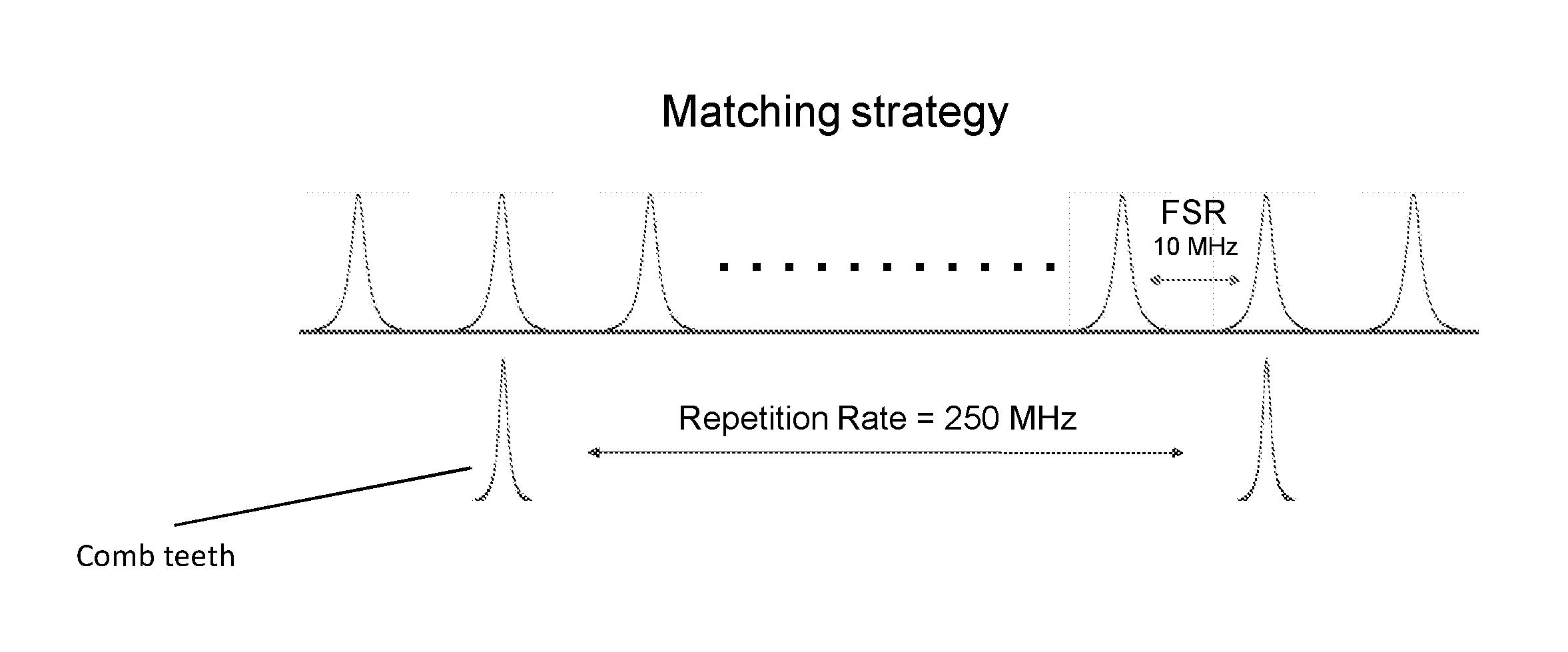Frequency comb spectroscopy apparatus and method of frequency comb spectroscopy
- Summary
- Abstract
- Description
- Claims
- Application Information
AI Technical Summary
Benefits of technology
Problems solved by technology
Method used
Image
Examples
example
[0106]Reference is now made to FIG. 3 where a more detailed layout of the apparatus of the invention is sketched.
[0107]The sensing element, an evanescent-field access block (EAB) 3, consists of a single-mode optical fiber (SMF28 Corning) which is side-polished down to the core along a short length (˜1 mm): the resulting D-shaped fiber allows interaction of the cavity evanescent field with a chemical sample S nearby. The resulting D-shaped fiber allows interaction of the cavity evanescent field with the sample S over a 1 mm×0.125 mm area. Using absorption from known liquid species, the estimated effective EAB interaction length, rescaled by the actual penetration depth of the evanescent field, is of about 30 μm. The EAB is inserted into a 20.4-m fiber-loop cavity 3, whose length is finely controlled by a custom-built piezoelectric fiber-stretcher FS 7. The cavity 3 has a free spectral range (FSR) of 10 MHz and a finesse around 200, corresponding to a linewidth of 50 kHz.
[0108]The int...
PUM
 Login to View More
Login to View More Abstract
Description
Claims
Application Information
 Login to View More
Login to View More - R&D
- Intellectual Property
- Life Sciences
- Materials
- Tech Scout
- Unparalleled Data Quality
- Higher Quality Content
- 60% Fewer Hallucinations
Browse by: Latest US Patents, China's latest patents, Technical Efficacy Thesaurus, Application Domain, Technology Topic, Popular Technical Reports.
© 2025 PatSnap. All rights reserved.Legal|Privacy policy|Modern Slavery Act Transparency Statement|Sitemap|About US| Contact US: help@patsnap.com



